Foreword
Since 2017 Big Change has had the privilege of bringing together global partners who share a commitment to reimagining education with and for young people. Collectively, we have explored and challenged old assumptions about what education is and can be, who and what it is for, and hope to create a new education story for our times.
At this moment, when education leaders, policymakers, and funders in every context are making decisions about how to restore learning and education, we want to offer a provocation. To say that it is simply not enough to “go back”. That to set up every young person to thrive - to prepare them well for their futures - the old ways will not do. More reform that leaves the existing narrow goals and purpose of education untouched will not get us there.
Our new education story must be one of transformation.
This publication is an invitation to education system leaders and decision makers to step back, to ask big questions, and to think differently about both what we are aiming for, and how to get there.
This is not to say that the job of transforming education is theirs alone. The nature of transformation requires a new mindset and set of approaches that work with those across the system - educators, students, parents, communities and peers. Working with global partners and contributors, we have identified three drivers to transform education systems, along with nine actions and real world stories that show how to make progress.
The interlinked drivers require us all to think differently about; purpose - the goals and outcomes of education; power - expanding who has voice and agency in education; and practice - unlocking innovation that has transformative potential. They encourage leaders and funders to act in new ways, with a greater focus on the wider ecosystem. While this may seem daunting, there are many exciting examples of people, organisations, alliances and places showing that a new way is possible.
We hope that this publication will act as a provocation for conversation and action. There is no quick fix or neat solution, so we invite you to explore the ideas, actions and questions set out here with colleagues and allies. And if you have ideas for how to share and activate others around this work, please get in touch.
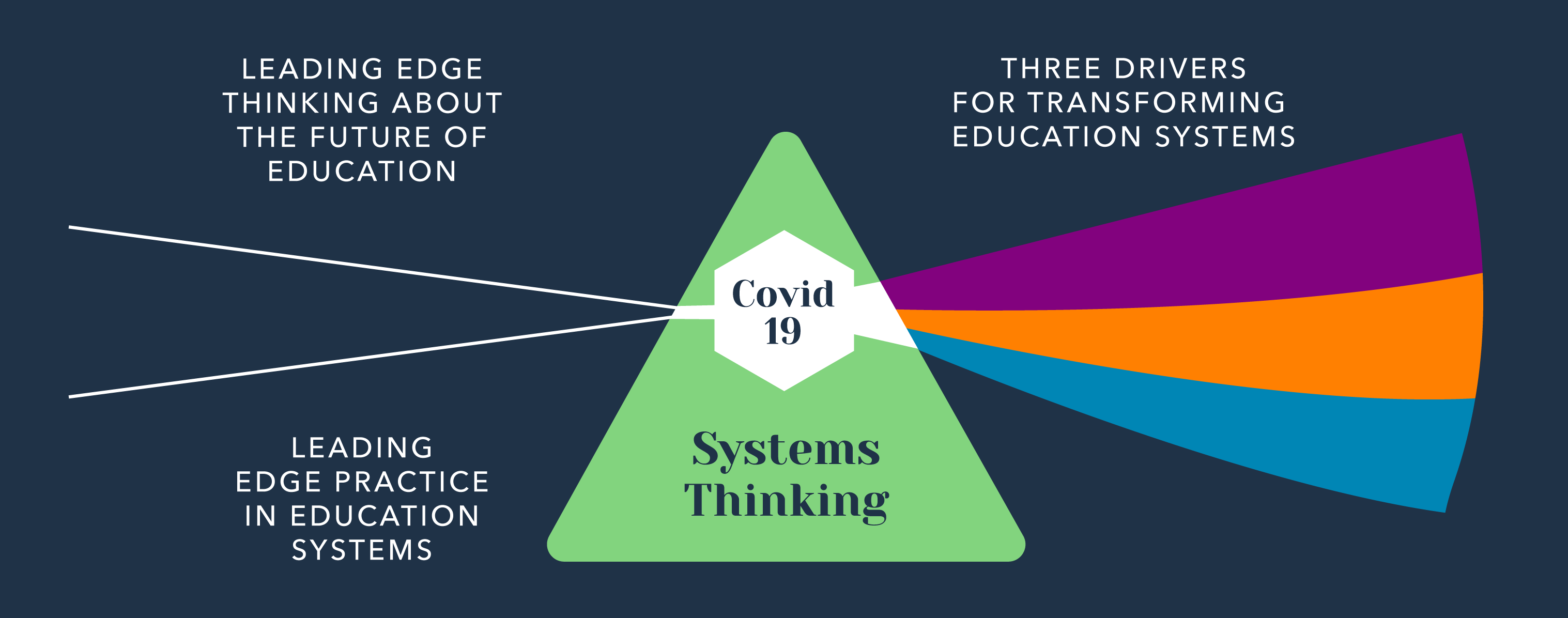
Figure 1: Sources of insight and ideas underpinning the three drivers for transforming education systems, created by Big Change
Introduction
Education systems around the world are at a crossroads; a moment of huge challenge and opportunity when, perhaps more than at any other time in living memory,1 decisions made now about what happens next for learning, will have deep and lasting effects for the future.
In 2021, education systems3 around the world began to emerge from a global pandemic that created the worst crisis in learning in a century.4
The individual, societal and economic impacts of this mass interruption to learning will take years to make themselves fully felt. In many parts of the world the pandemic resulted in impacts for children way beyond education, such as increases in early marriage and child labour, trafficking and displacement.5 In the short term, though some children, families and educators discovered new ways of learning, many children lost months of learning progress and fewer completed secondary education.6 Many children’s mental health and wellbeing suffered under lockdown7 and in response to adversity, personal grief and economic hardship brought about by the pandemic.
The drive to restore and reinstate what was there before the pandemic is understandable, when trauma and uncertainty have been such a widely shared experience.
The education workforce, celebrated and appreciated during the pandemic, were nevertheless depleted and exhausted by its demands.9 Parents greeted school reopenings with relief and enthusiasm as a chance to return to work and society. Children were happy to be back amongst their friends and learning again.
However, undeniable inequalities that existed in learning were also massively accelerated10 by the pandemic. In many places, gaps widened;11 progress was halted or reversed;12 and the impact of poverty amplified,13 adversely affecting millions of children - and laid bare for everyone to see.
How can we simply go back?
How do we ensure that we don’t go back to the old world, old us when this crisis is over? If we go down that path, it would be such a waste of this deeply transformative experience that life has thrown our way.
There may be a key distinction between education systems that will master the crisis and move forward, and those that will not. The distinction may be between those education systems that feel threatened by alternative ways of thinking and those that are open to the world and ready to learn from and with the world’s education leaders.
Learning reimagined
Although it undoubtedly sent shockwaves across education systems,15 many of the challenges the pandemic raised - and the creative solutions that arose to meet them - were far from new or unknown.
There have been calls to reimagine learning16 17 18 for many years and these have grown in urgency as the long-anticipated impacts of major social and economic trends, technological advances, shifting geopolitical landscapes, climate change and increasing inequality,19 have begun to take effect.
At the heart of calls for change are shared questions about what the future holds: What purposes do learning and education systems need to serve if humanity and our planet are to flourish? What should learning and education systems look like, if we are to live lives that have meaning for the individual and significance in the world, and to work together to solve our greatest problems?20
There is also a growing global consensus about the shifts that are needed in how learning happens, if education is to meet these purposes.
Learning that meets these goals needs to be more diverse, more individualised and more learner-centred.22 It needs to be more multi-disciplinary and connected to life beyond schools: to family and community; to meaningful work and to the digital world. Learning needs to attend more to the social and emotional development of children and young people, their empathy, their compassion and their ability to form positive relationships.23 Post-pandemic, where learners are struggling to come to terms with their experience and loss.24
Critically, there is also agreement that learning and education need to offer every child - not just some children - the chance to reach their unique potential and further, that learning and education should become solutions to tackling inequality, rather than part of the problem.
It is perhaps this purpose that will prompt the most urgent and fundamental shifts.
Our education system has mined our minds in the way that we strip-mine the earth for a particular commodity. And for the future, that won’t serve us. We have to rethink the fundamental principles on which we are educating our children.
Countries are coming together to ask big questions about the future, questions like: In a world of machine learning, how should human intelligence diversify, and what would that mean for education? Thinking prompted by questions like this point to new purposes for education in the future, for example, developing competencies that are unique to humans, which enrich human lives and which complement technology, not compete with it; competencies such as adaptive problem solving, ethical decision-making and aesthetic perception.
Learning and education should…
Set up all young people to thrive in life
- Focus on developing a sense of personal agency alongside the attitudes, knowledge and skills young people need to fulfil their potential and contribute to the well-being of others and the planet.
Create a story of success for every child
- Start with the needs of each child and be grounded in an expansive view of what they can achieve, placing value on much more than academic outcomes and measuring only what really matters.
Help every child fall in love with learning so they keep on learning for life
- Ignite the joy of learning in every child, encouraging them to develop their sense of passion and purpose, tapping into their intrinsic motivation and emphasising that learning is a lifelong skill.
Big Change, 2019
System reform or system transformation?
To reimagine learning - sustainably and at scale - the education systems within which learning takes place need to be not just reformed, but transformed: not just improved but redesigned.
Many education systems are in the process of continuous reform, in which efforts are made to improve efficiency, effectiveness and equity, but which largely keep the existing system and goals in place. Transformation of the kind witnessed during the pandemic, by contrast, involves both a shift in the dominant logic of a system and for the effects of that shift to be experienced at scale.
Transformation is required if education systems are to adapt to the new challenges and opportunities facing young people and society; the third horizon in an emerging - and uncertain - future.26
Education systems produce the results they were designed to produce.
Let’s give young people a chance to shape our world. That’s why this transformation is needed.
A glimpse of the future
While it has been a source of major disruption to learning, the Covid-19 pandemic has also been a stimulus for innovation in education systems and has grown demand for mainstreaming new ideas and practice, which were previously found only at the margins.27 Adaptations made by educators, parents and communities during school closures have demonstrated the possibility and the benefits of reimagining learning.
Nowhere is this more apparent than in the rapid expansion in the use of digital resources and platforms in education systems which, before the pandemic, were simply not ready to embrace digital learning.28
Perhaps even more important, the pandemic has prompted recognition of the value of relationships, critical for engaging learners effectively30 and for building resilience in the face of adversity.31 The relationships between educators, learners, their families and communities - the people who are at the heart of learning32 will be fundamental in any deliberations about where education systems should go next.33
The pandemic has broken through a barrier that has been persistent in education: the belief that we can’t change the existing model because it is somehow set in stone or enshrined in law. COVID blew that away and showed us that everything could change, and as a result we have made huge, accelerated progress in closing basic connectivity gaps in some places.
Now is the time to chart a vision for how education systems can emerge stronger from this global crisis than ever before and propose a path for capitalising on education’s newfound support in virtually every community across the globe.
A system perspective
Education systems are inherently complex, deeply connected to - and interdependent with - people systems (family and community) and other systems (business and the economy, politics). They loom large in the public consciousness and carry huge historical and cultural significance.34
It is perhaps unsurprising that even relatively small changes can be hard to implement, and the realisation that education systems can be - must be - transformed for learning to be reimagined, is daunting to say the least.
However, viewed another way complexity and interdependence can be seen as advantages, as assets, in education transformation.
Recent work, inspired by the late Donella Meadows,35 an American environmental scientist and pioneer in the field of system dynamics, has revealed fresh insight into how complex systems like education resist transformation by accommodating and adjusting to change at a superficial level without making any fundamental shifts.36 37 38 This helps to explain how it can feel for people in education systems that everything is changing all the time, but that nothing really important ever does.
Meadows identified 12 levers - places to intervene in a system - that can bring about system transformation. Education reform efforts on the whole concern themselves with the practical levers, which can be helpful for improvement but are ultimately weak and leave the system itself largely unchanged.
If system transformation is the goal then work needs to happen at the points of stronger leverage, which concern culture, beliefs and values, and which require a very different approach.
We have seen education become everyone’s business, whether you are a corporate CEO, a parent, or a minister. How do we motivate and catalyse these connections to accelerate collaborations between likely and unlikely allies? What if there was a way to map new narratives and showcase new connections, so we can ask new questions and unearth new thinking in education?
Figure 2: Meadows’ Places to Intervene in a System adapted by Winthrop, et al. from Meadows (1999) and from conversations with Populace
Three drivers to transform education systems
Transformation requires work deep within the system.40 It is a deeply human endeavor.41 It requires understanding the forces at the heart of education systems, to name and challenge those that cause systems to resist change, despite frequent, well planned and richly resourced attempts to deliver it.
Together these three drivers begin to indicate a theory of action, directing leaders, funders and decision makers to the places to intervene in education systems at sufficient depth to bring about fundamental and lasting changes.
The laws, regulations, structures and institutions on which educational reformers tend to focus are just the tip of the iceberg. The much larger part, lying beneath the surface, concerns the interests, beliefs, motivations and fears of those involved.
Redefine the goals and outcomes for the education system to reflect the challenges and opportunities of the future and the values and priorities of stakeholders
Expand who has voice and agency by investing in stakeholders so they can make confident decisions about learning and education
Unlock innovation by enabling those working in education to create and share learning innovations with the greatest potential to transform the system
Beyond theory to action
It is axiomatic that action should be at the heart of a theory of action, but this is not always the case. Theoretical models, helpful though they may be, are often just that - theoretical - and the work to make the big ideas and big challenges they advance actionable is left for another day, another report.
Challenged by partners to go further on this occasion - to bring the theory of action to life - each driver comprises a handful of actions that might be taken to bring about transformation, along with stories from the real world; places and organisations where progress towards transformation is being made.
We have been selective. There are many actions that could and are being taken, in service of transformation in education systems around the world. In the spirit of this work, we have focused on points of high leverage and deep impact, indicated by the research and evidence shared by partners and in the real world stories of transformation.
On the pages that follow, we examine how these three drivers work, together and separately, to bring about education system transformation, and we pose challenging questions for reflection and discussion in your context.
Note to readers
Engage stakeholders in defining the purpose of education
Reveal and challenge the shared assumptions blocking transformation
Discover, connect and amplify new alliances
Liberate agency and co - agency of educators and learners
Enable a wide range of stakeholders to take part in decision making
Make data and information more accessible, useful and interesting to stakeholders
Make learning more learner centred
Integrate new ways to assess and recognise learning
Strengthen the link between learning science and teaching practice
Purpose
Step into almost any school in almost any country and you will find skilled, caring and committed educators creating a welcoming and stimulating learning environment that nurtures and challenges children and young people who are full of talent, energy and curiosity.
Stick around for long enough and you will also notice how often this happens despite the pressures and incentives of the education system within which the school sits, and not because of it.
Wait a while longer and you might see those pressures begin to constrain how, when and where learning happens, to damage learning relationships and the culture of the school community, to frustrate parents, exhaust educators and to disengage learners.
Education systems are designed to deliver very specific outcomes - basic skills for many, exam success and higher education for some; safe supervision of children and young people while enabling their parents to work; and the transmission of cultural norms and values that govern how children and young people should behave in the world now, and as adults.
Opportunities to learn and practise sports, developing artistic appreciation and expression and enjoying the society of their peers are also important functions of education. Its purpose, however, is to use examination and accreditation to determine what roles children and young people will take in their country’s future, and whether and how they will contribute to - and benefit from - its wealth and progress.
Stakeholders in learning and education - in particular educators, parents and learners - are rarely if ever asked if they see the purpose of education this way.44
If education systems are to truly transform then different outcomes - new purposes - need to be agreed by a wider group of stakeholders, in the context of a frank appraisal of the challenges of the future and transparency about the shortcomings of current systems.
Education is the vehicle for creating empathetic, creative, resilient, ethical leaders who can take people to new places and solve grand challenges that face society.
Left solely in the hands of those who are invested in and who currently control education systems, any questions surrounding its current purpose will almost certainly be answered in ways that align to the outputs and outcomes that system is geared to delivering.
Education systems are too focused on preparation for work and not enough on preparation for life. You need to learn how to live in the world.
I think that is what the purpose of education is to, to create a space where we are developing skills that allow us to be great human beings.
Questions to consider
To change the purpose of education means challenging the collective assumptions that inform and reinforce the current purpose and making explicit new assumptions that do the same for the new purpose.
Education systems are held in place by a vast array of collective assumptions - widely held beliefs - about how the world works; assumptions that often go, not just unquestioned, but entirely unnoticed.46
To challenge collective assumptions requires first to reveal them, then to question their legitimacy and challenge their power, for instance to reinforce inequality or prevent progress.
For instance, the collective assumption that only a select few children are capable of high achievement47 persists in education systems around the world, despite overwhelming evidence to the contrary.48 In the context of this assumption, one purpose of education systems - finding out who the “smart” children are, as defined by existing, often narrow measures, and preparing them for higher education and professional careers and leadership thereafter - makes perfect sense.49
However this is just one of many myths that persist in education systems. Other assumptions - that poverty is an insurmountable barrier to learning for instance, or that some countries have better cultures for learning than others - are equally false.50
Challenging - and changing - collective assumptions is a developmental journey, not a technical one. This is hard because it requires people to confront fears, biases, or hidden commitments that they didn’t even know they had, and that might be serving their interests in ways that make them uncomfortable.51
However, myths and assumptions like this have to be debunked2 because they underpin and justify a whole set of arrangements in education systems - standardised testing, ‘ability’ groupings, timetabling and the subject choices available to children to name a few. These are the very arrangements that reinforce inequalities. They are the forces buried deep in education systems that ensure systems deliver on their purpose: to filter the best performers based on their intake of standardized material.53
What would an education system look like that was underpinned by different assumptions, for instance, that not just a select few children, but all children, were capable of high achievement? How would that change people’s view of the purpose of learning?
In a learner-centred paradigm, we value each child as unique and believe all children have boundless potential to contribute in countless ways. In this paradigm, the purpose of education is to maximise exploration and learning so that each child can discover who they are, their unique gifts and how to contribute those gifts meaningfully in the world.
Education should help young people to find out what they want from life, what they love.
The people in charge should be thinking, who really has the power to make things happen ? And what learning do they need?
Questions to consider
It is striking how often people feel themselves to be in the minority - that they believe they feel or want x and everyone else wants y.54 55 It can make people stay silent on even passionately held desires and opinions.
This matters because a parent’s or educator’s belief that their view about learning and education differs from others’ prevents them from finding and connecting with people who might share their beliefs. A misalignment or a lack of communication of beliefs and values around the education purpose is a barrier to successful system transformation.56
In a recent survey of parents and teachers in 10 countries, The Center for Universal Education at Brookings found that the majority of both parents and educators think that children’s social and emotional development is the most important purpose of education, but that each group believes the other is more focused on academics than they actually are.
The same is also true of how and where learning happens. Both educators and parents would, for the most part, prefer interactive, experiential, and social pedagogical methods. Yet, parents often overestimate educators’ focus on academics.57
Between May 2020, and March 2021 The Center for Universal Education at Brookings conducted a survey of more than 24,000 parents and 6,000 educators in 10 countries. Their questions explored beliefs about the most important purpose of school, what a quality education looks like, what types of teaching and learning experiences they thought were most important for their children and students, and how their educational beliefs were formed.
Success in education today is about identity, it’s about agency and about purpose. It is about building curiosity - opening minds, it is about compassion - opening hearts, and it is about courage - mobilizing our cognitive, social and emotional resources to take action.
Questions to consider
Real World Story
How Enseña Perú engaged an entire community to collectively define a purpose of education
The Ancash region in the Central Highlands of Peru generates income through mining and isn’t considered a poor region. Yet, 73% of people work as subsistence farmers on plots of less than two hectares and young people tend to migrate away from the region.60 In 2016, when Enseña Perú started working in the region, Ancash’s education quality compared unfavourably to other regions in Peru.
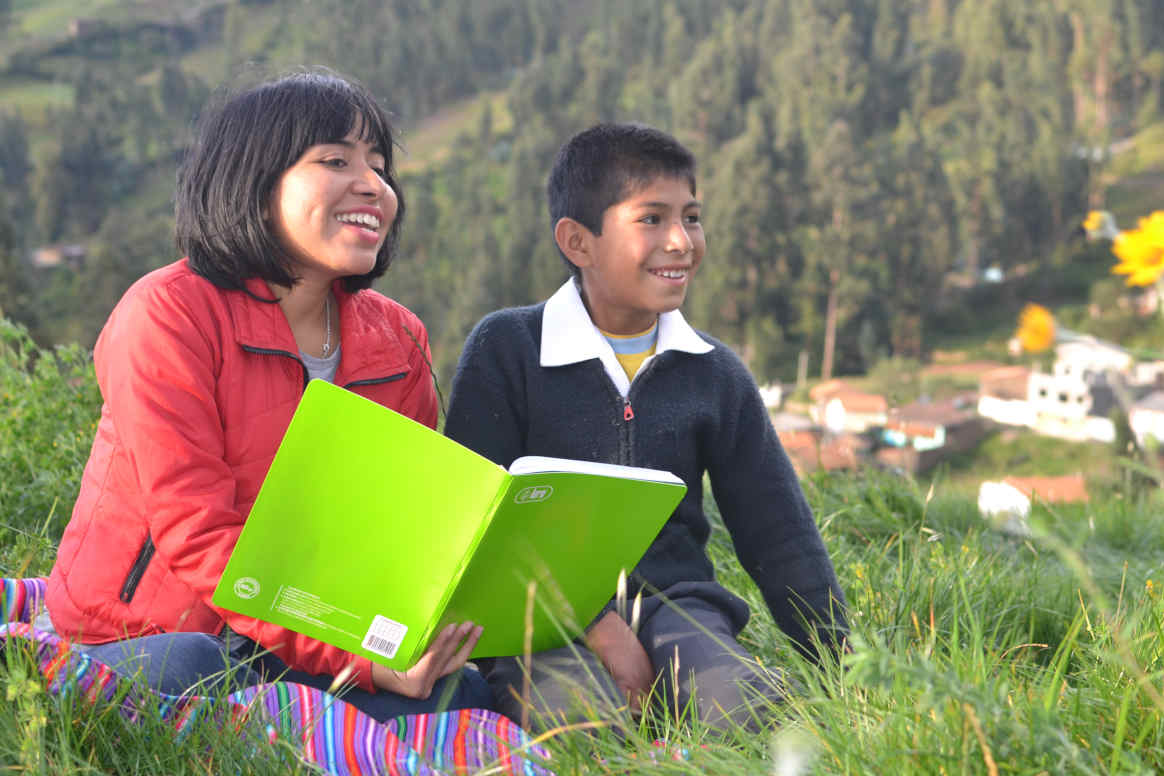
Enseña Perú (Teach for Peru), as part of the Teach for All network, is a non-profit organisation founded in 2009, with the mission to organise a movement of collective leadership that catalyses educational transformations across Peru that aim to close gaps in educational opportunity.59
Enseña Perú took a collective action approach and built deep partnerships with the local government, the local mining company, other citizens’ sector organizations, parents, teachers, students, and other community members.
Together, they created systems and structures for shared goal setting, strategy setting, and monitoring. They launched ¡Qué Maestro!, a public teacher training program, and ‘Ayni’, a grassroots community mobilization meeting.61 In 2019, 450 local people joined the Ayni event to build shared momentum around improving education in the region, and strengthen participation.
As a result of long-term trust-building and community events, Ancash is the first region in Peru to have a regional unit of educational evaluation, a key policy, and is also leading in the creation of their 2036 vision with a participative process - the whole region’s collective vision for education. This includes a shared vision for student success and its own measures for student outcomes and a renewed, collaboration-based, teacher professional development system. A student named Rómulo explains the connection he feels to the entire ecosystem: “We’re working together to improve education in our region and in our country.”62
Enseña Perú’s collective leadership approach has also improved students’ academic outcomes. An independent, quasi-experimental study by the Universidad del Pacífico demonstrates that Enseña Perú fellows had positive effects on student academic learning, as measured by national exams in reading and mathematics from 2012 to 2018.63 According to a 2020 Center for Global Development paper, these results would rank Enseña Perú among the 90th percentile of the most effective programs in supporting student learning.64 Enseña Perú powerfully demonstrates how collaborative leadership can lead towards a new understanding of education and its role in society.
Real World Story
How Dream a Dream redefines and acts upon a new purpose for education in India
Dream a Dream regularly hosts ‘Change the Script’ gatherings where local charities, corporates, volunteers, governments, expert consultants, and strategic partners join forces with people who have the power to change education at scale. So far, in six of these conferences decision-makers and young people reimagined learning and the purpose of education in the 21st century.
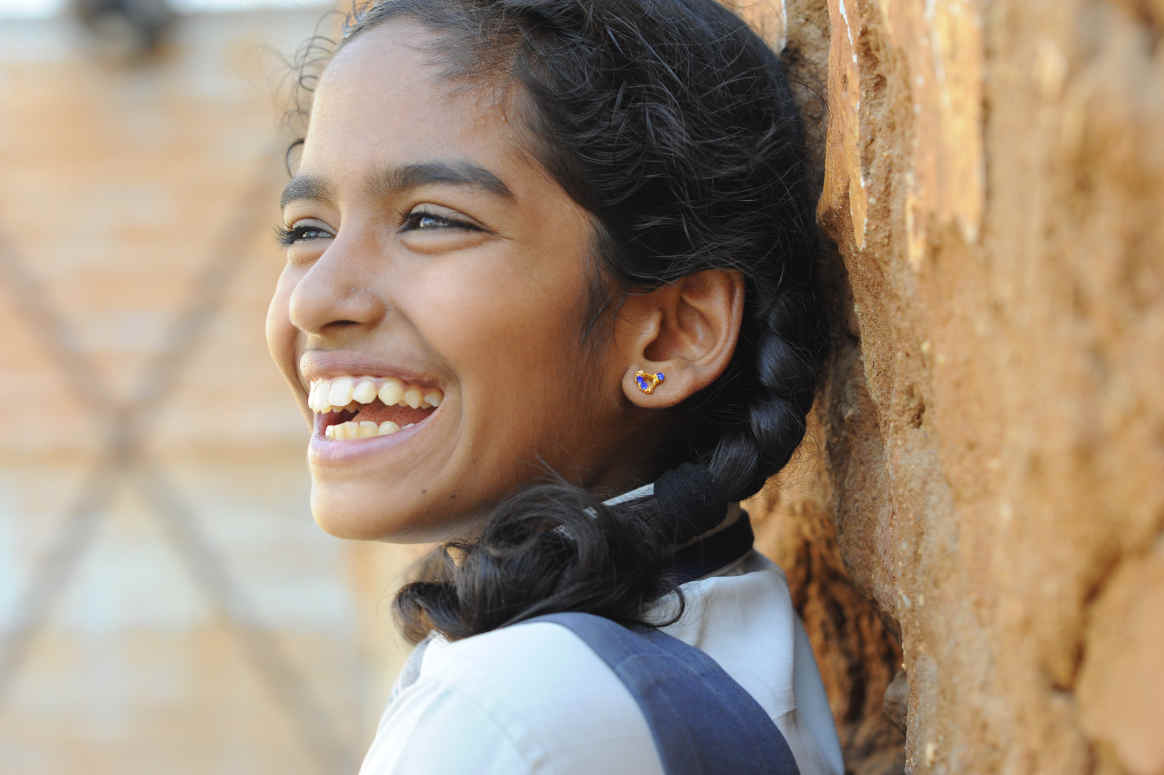
One third of India’s children grow up in poverty and experience adversity (abuse, violence, malnutrition, etc.).65 For more than two decades, Dream a Dream has been empowering children and young people from vulnerable backgrounds to thrive in the 21st century.66
With the help of discussions, keynotes, stories from young people, interactive learning platforms and experiential activities, Change the Script united a diverse set of stakeholders to share their experiences and learnings, and to take their discussions one step further towards action.67
A new purpose was identified: children develop capacities that lead to a life of purpose, meaning, contentment and wellbeing,68 to counteract the pressure placed on young people by conventional education focused on academic excellence which they beleived might even contribute to high suicide rates among them.69
In July 2018, the Delhi government launched the Happiness Curriculum in 1,030 government schools to focus on the holistic development of all learners.70 The objective of this program is informed by the redefined purpose of education: to improve the mental wellbeing of students.
The Curriculum was developed with the help of professionals which includes teachers from Government of Delhi schools, psychologists, education consultants, volunteers and the State Council of Educational Research and Training. This team also included senior officials from the Directorate of Education, Government of Delhi and people from various NGO’s.
Dream a Dream anchored the curriculum in collaboration with other NGOs like Abhibhavak Vidyalaya, Circle of Life, Blue Orb Foundation and Labhya Foundation. The curriculum develops mindfulness, social-emotional learning, critical thinking, problem-solving and relationship-building skills intending to equip students with the necessary skills and environment to become purpose-driven and explore a nuanced idea of happiness.
The Happiness Curriculum has since also been implemented in states of Andhra Pradesh and Uttarakhand reaching out to nearly 2 Million students.
Real World Story
How Teach For All’s Teaching As Collective Leadership starts with purpose
As part of Teach For All, the Global Learning Lab has hosted dozens of learning loops and workshops with thousands of people to ask what is happening in and around classrooms where students are growing as leaders of a better future for themselves, their community, and all of us.
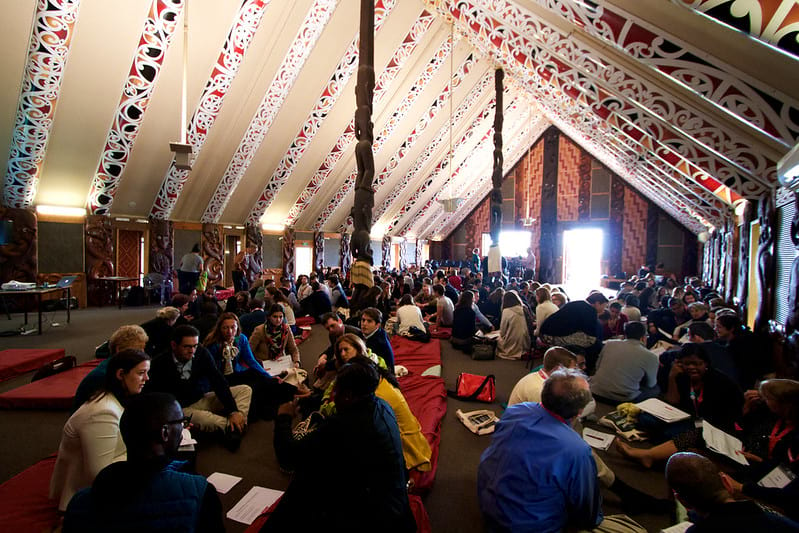
Teach For All is a growing network of independent organizations in more than sixty countries worldwide. Network partners recruit their nations’ diverse, promising leaders to teach in under-resourced schools and communities for at least two years, and with this foundation, to work throughout their lives, from inside and outside of education, towards the systemic changes necessary to ensure all children thrive.
The result is the Teaching As Collective Leadership framework - a model crowd-sourced from transformational classrooms and the frontiers of education research that starts with the purpose of education.
Many existing models for teacher training focus on actions or outcomes. In contrast, the Teaching As Collective Leadership starts with a purpose. Instead of imposing visions of student success and teaching practices on schools and communities, the model’s core is conversations about purpose with teachers, students, and families.
“When these “purpose conversations” are prioritized, we see teachers shifting away from defining success in terms of closing gaps in standardized achievement scores. Instead, we see students, families, and educators envisioning better lives and futures with healthy, educated families, with meaningful careers, and with the skills and agency to make their communities, countries, and society better.” - Care et al., 202071
The Teaching As Collective Leadership framework does not come up with answers but with questions. The new teacher training is not a model, but a mirror to look into.72 It’s an actionable, locally customizable framework of teaching that enables students to fulfill their potential as leaders of a better future.
Power
During the pandemic learners and educators had autonomy and agency to take charge of their learning to explore new ideas and experiences like never before. New interests and passions emerged for many students and teachers.75 Learning that connects to learners’ interests and passions is engaging and motivating, with implications for achievement within the current system.76
Agency is also at the heart of processes to transform learning and education. Agency - for learners and educators - matters, because it is their greatest opportunity to influence transformation.
Further, whereas agency alone might lead to fragmentation and idiosyncrasy, collaborative agency, or co-agency,78 connects learners and educators in a shared endeavour. Co-agency implies the effects of the learning environment on learners’ sense of agency, noticing the importance of a collaborative culture and the capacity and willingness of individuals and institutions to see the world from different perspectives.79
Learners, in the learning they design and choose for themselves, point the way to learning that is relevant and engaging for them. Educators, innovating in their practice, demonstrate the art of the possible in new forms of pedagogy and assessment.
While it might be hard to envisage transforming education systems one classroom at a time, inspiring educators and engaged and talented learners are nevertheless, together, reimagining learning every day.
Whereas transforming education systems in all their complexity might feel overwhelming and appear unachievable, nurturing this kind of local innovation does not. And local innovation, at scale, can become system transformation.
For innovations to move beyond the level of the individual and the classroom, people throughout the system - policy makers, system leaders, school leaders, as well as educators and learners - need to be encouraged and supported in developing the mindsets and skill sets to evolve system culture that honours the agency and co-agency of learners and educators.81
Agency is defined73 as the capacity to set a goal, reflect and act responsibly to effect change. It is about acting rather than being acted upon; shaping rather than being shaped; and making responsible decisions and choices rather than accepting those determined by others.
It is imperative to allow autonomy at every level in the education system to change it from an administrative institution to a learning institution.
We need to remember that the system is us. In the words of the late Sir Ken Robinson, you don’t need to change the system, you just need to change yourself. If everyone were to act with integrity, as decent human beings, then the challenge of complexity - the need for complex things like transparency - would fall away. If we are to transform education then we just need to be excited about doing interesting things - and to see where that takes us.
Mostly, all education decisions are taken by governments.
Questions to consider
Learning is essentially a lifelong endeavor, where employers, community members, as well as young people and educators shape an ever-expanding curriculum.82
The pandemic shattered the illusion that schools and colleges are the only places where learning happens, and politicians, administrators and experts are the only people who can make decisions about learning.
Of course this was never actually the case, but it took Covid to break formal education’s near monopoly on access to learning expertise and resources, which had previously served in many places to marginalise home, peer and community learning and other informal learning opportunities.83
When schools closed, some system leaders scrambled to make digital technology and remote learning resources universally available, many for the very first time.85
Meanwhile parents - frequently overlooked protagonists in education86 - and educators began to share information and to innovate together, not just schooling, but how to work, parent, and practise physical and mental well-being, as well as support their children’s learning.87
In communities where learners did not have access to remote learning, parents and educators worked together to ensure learners’ fundamental safety, wellbeing and access to basic nutrition.88
Elsewhere, institutions, community groups, tech companies and civic organisations mobilised resources as part of a broad and impressive humanitarian effort which, as well as providing laptops and data for online schooling, also created a plethora of new content and learning opportunities far beyond core curriculum.89
Communities coming together demonstrated what happens when a wider group of people with new ideas, resources, opportunity and need are given the chance to reimagine learning, and when power is divested from the highest levels of government to the local level, where there is better understanding of what the needs are and what solutions can be workable.90
It is striking how diverse learning became in communities where parents, learners and educators had the scope, conditions and resources to co-design learning outside of the constraints of their formal education systems. In addition to remote schooling there appeared powerful, complementary learning opportunities that connected children and communities through film-making, storytelling and exhibitions of artwork in house and apartment windows; in online choirs, bands and orchestras; in no-contact treasure hunts and other outdoor activities; in yoga, mindfulness and health and fitness classes; in bake-offs and craft clubs and so on.91
However, just as with access to remote schooling, these rich and engaging opportunities were really only available to the more privileged learners, those for example with access to outside space and with parents or family working from home or furloughed.
This serves as a critical reminder that developments that seek to engage parents and communities in education must be cognisant of the need to grow parents’ opportunities and confidence to help their child learn, to avoid exacerbating further global learning inequities to the detriment of the most vulnerable.92
If new and different people are to be involved in learning design and decision making, new and different structures and tools are also required, which enable, for instance, learners and parents to share their ideas, views and experiences as part of a broader, more inclusive debate about education transformation. For example, young people who have dropped out of formal education have a very specific perspective and experience to offer and might helpfully be included in an expanded group of stakeholders to enrich decision making,94 but rarely are.
Globally, strategies that go beyond engaging parents and communities in improving existing education systems are few and far between. However there are successful examples, for instance parent-focused policy development in Juazeiro do Norte, Brazil; community working groups for educational planning in British Columbia, Canada; and Remake Learning Days, regular parent-focused learning festivals in the USA.95 96
Successful engagement strategies consider both context - parents’ attitudes to engaging with learning and education vary according to culture and opportunity97 - and gender, ethnic, socio-economic class, and other divisions of power and privilege, to continually check that everyone who wants to can take part, and to avoid reinforcing existing inequalities.
In the face of a challenge on the scale of COVID-19, “robust systems don’t sequester solution-making power; they share it.”
Family-school engagement strategies that seek to redefine the purpose of school require both school personnel and families to come to the table in a designing role where each set of actors can provide their perspectives and views. It will be difficult to redefine the purpose of school without ensuring that families have the voice and agency needed to join school professionals in a co-creation process.
Students should also be asked to be involved in decision making since the decision is being made about them.
Education as a whole does not often get the priority it needs among government departments, in terms of resources that are allocated. Thus, teachers are often poorly paid in comparison to other professionals and schools do not have the learning resources they need.
So we made sure that everything we did, young people remain at the heart of it - we invert the current power structures.
Questions to consider
It is impossible to make well-informed decisions without the full range of relevant data and information available, which is what happens when only people and organisations invested in the system’s status quo commission and accumulate data and have access to it.99
Making data and information more widely available is an excellent first step; however to become useful and actionable, these have to be interpreted, explained and integrated in decision making processes in ways that drive learning and that are meaningful and accessible for those taking part. Most education data are not usually made public, are not disaggregated, and are not in formats that are user friendly.100
Further, if we are to empower stakeholders, we need to expand the range of data and information that is available to them. Parents may receive information about their own children’s attainment using a very limited range of indicators, most often abstracted grades or levels in unrelated subjects and performance in unseen tests. In some countries, communities may be able to find data about the performance of their local school, again using test results as the main indicator of success or failure in any given reporting period.
To make informed and confident decisions, stakeholders might reasonably ask questions that data like these cannot possibly answer; questions that relate to their values and priorities. How happy/safe/confident are our children at school? How resilient/creative/adaptive/entrepreneurial etc will they become? How is our school preparing our children for the challenges and opportunities of the future? Are they learning what they need to thrive? Is our school fair? Are all our children able to fulfil their individual and collective potential? And so on.
We also need to expand the horizons of those making decisions by connecting with people and places where learning is being reimagined and education systems transformed. It is hard to imagine a radically different future without being able to see and understand what transformed learning and education look like.
So it is unsurprising that, on the rare occasions when they are invited to imagine a different future for learning and education, parents and communities; learners and educators can struggle to see beyond a better, more effective, more technologically enabled version of the learning and education they currently experience.
Using digital technology to shape data collection and data sharing can place more power in the hands of more people.
Educators, parents and learners don’t have the same privileged access as researchers and policy makers to the huge range of learning innovations and brilliant uses of technology that are out there. They need opportunities to see what amazing looks like - and then let’s talk about what the future of education should be.
Questions to consider
Real World Story
How Escuela Nueva from Colombia enables students, educators, and communities to exercise power
Escuela Nueva’s approach empowers teachers and students to be the key actors of change. The program is built on a bottom-up approach, with teachers, parents, and students as decision-makers to shape the learning process. A cornerstone of Escuela Nueva schools is authentic student governance: the incorporation of student’s voices into the administration and operation of schools.

Escuela Nueva (New School) was designed in the mid-1970s to improve education in rural Colombia. At that time, more than 50 percent of rural children never attended school.103 What started as a small-scale initiative to create a new model of teaching and learning, expanded to 8,000 schools in the 1980s, 20,000 schools in the 1990s and Escuala Nueva’s student-empowering model is now used in 19 countries from Latin America to Asia.
The underlying premise of student agency existed in Escuela Nueva’s early days. Vicky Colbert, coauthor and initiator of the program, explains: "The basic idea was to transform the conventional teacher-centered schooling practices into a learning-centered model that would integrate curriculum, teacher training, community involvement and administrative strategies in a systemic and cost-effective way."104
The program developed and implemented a range of methods to create space for students, and communities to exert their power.105 Teachers act as learning guides and facilitators rather than a unique source of knowledge. They use learning guides to facilitate a student-centered classroom environment and operationalize a child-centered, participatory learning approach including self-paced student learning, self-assessment, and flexible promotion. Escuela Nueva also encourages high community involvement and engagement through a holistic, and collaborative approach.
“Rather than being run as a mini dictatorship, with the principal as its unquestioned leader, the school operates as a self governing community, where teachers, parents, and students have a real say in how it is run.”106 David L. Kirp, 2015
In 2002, a Unesco study found Colombia to be the only country where rural schools outperformed urban schools.107
Real World Story
How Kids Education Revolution gives control and decision making power to young people in India
Kids Education Revolution believes that education partnership is created when educators and students work at ‘eye level with each other’.110 Control and decision-making power are shifted from adults to students, enabling student involvement in key questions such as purpose (why education matters), practice (how education should be delivered), and school governance (how schools should be run).

When children voiced their discontent about India’s education system, Shaheen Mistri founded Kids Education Revolution(KER).108 A collective of students and educators formed, united by the vision to reimagine education to create a better world. What started 2017 in India is now active in 11 cities across 9 countries with more than 37,000 student revolutionaries and educators.109
The KER movement drives change through student leadership. KER offers a platform where students and educators explore three principles:
Safe Space for Voice
Kids can safely express their identity and beliefs. Teachers build safe spaces in classrooms through learning circles, active listening, including literature and theatre for potential discovery, and learn to learn from students’ projects.
- Kids and Educators as Partners
On the basis of respect, reciprocity and shared responsibility, students and teachers groups learn from each other. They build partnerships through student advisory committees, student involvement in class planning and execution, student-as-teacher buddy systems, and inviting students as contributors to regional and national platforms. - Kids as Changemakers
Students operate among the “I CAN mindset” and find solutions for self-identified problems. Some approaches to support students in changemaking projects include design for change models, problem-solving platforms, and scalable creative outlets such as slam poetry events.
More KER formats bring these principles to life, such as peer-learning, global KER summits, national student-led education conferences, and student advisory councils. A student says: “It’s about equal contribution between adults and us as kids. It should be in our hands what we learn.”111
Real World Story
How African Leadership Group is empowering 3 million young adults to become ethical leaders who can solve society's challenges with creativity
To equip and harness the potential of the young African workforce as leaders and innovators, the African Leadership Group utilizes an experiential, technology-enabled, peer-to-peer learning model. Rooted in the purpose of education to develop ethical, creative, and courageous leaders who can solve grand challenges the world faces, the African Leadership Group shifts focus to the learner. For example, learners actively shape the learning and include support from the broader community.
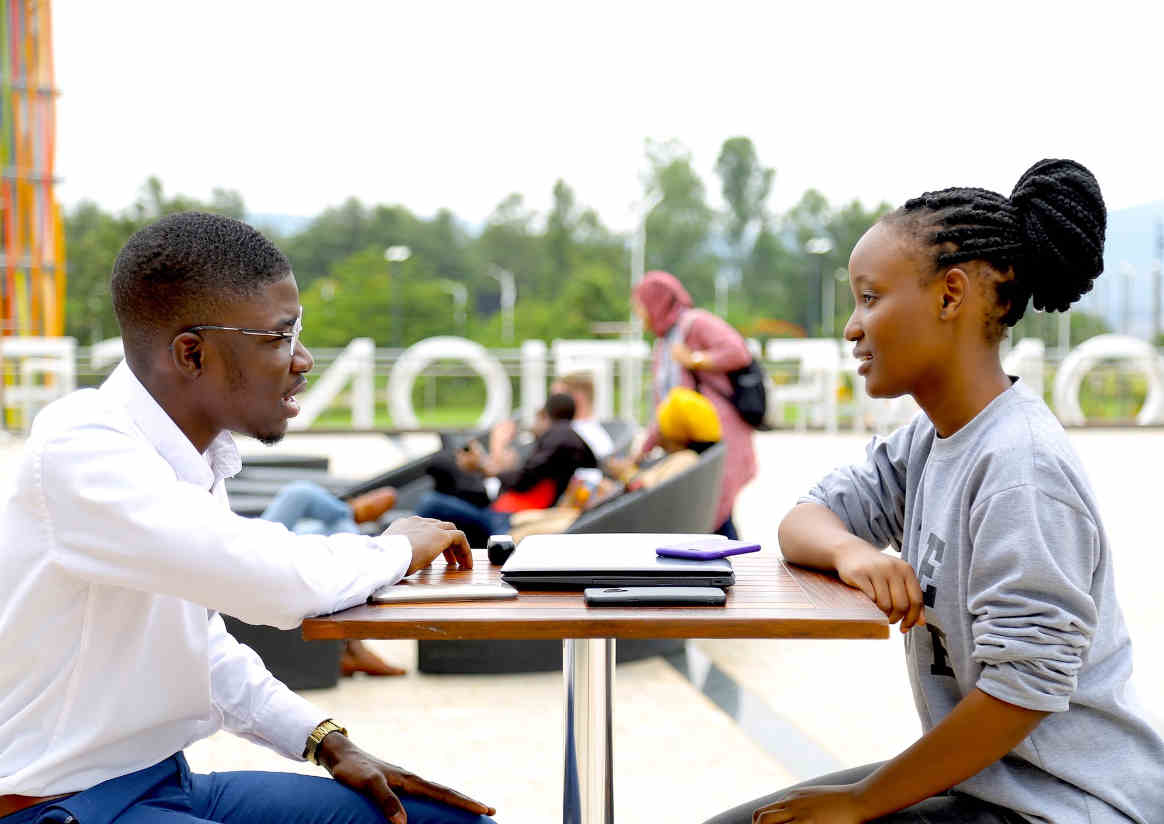
The African Leadership Group (ALG) is an ecosystem of legally independent entities with a shared vision for transforming Africa by developing 3 million ethical, entrepreneurial leaders by 2035. For over 15 years, the African Leadership Group has been working with a model that empowers Africa’s youth through focus on potential, effective practices, and a strong network of leaders and amplifiers.
Specifically, learner ownership means, enabling them to design their own courses of study, with a focus on learning in the classroom (10%), learning from peers (20%), and learning from experience (70%), i.e. learning by doing. They connect these learners with a broader community of coaches and mentors who provide funding, resources, and connections which help learners learn lessons helpful to the challenges they have chosen to tackle. ALG acknowledges that these are not the usual foci of traditional education systems that invest more heavily in academics and classroom learning, and less so on practice and mentoring.
ALG has overturned the assumption that universities or learning organizations need to be built around access to knowledge. They have embraced the reality that “A child in Africa with a phone has more access to information than someone at a university doing their phd 30 years ago” and have given more agency to learners to drive their own learning, including learning from each other. The results speak for themselves; graduates of ALG have earned internships and jobs in the world’s most prestigious universities and workplaces, such as Harvard, Yale, Oxford, Google, L’Oreal, and fellowships such as the Rhodes and Schwartzman scholarships. In fact, the newest evolved model for the African Leadership University has done this at a fraction of the cost of a traditional university, and has expanded access to millions of young people.
Practice
When the learner is at the centre, it is their strengths and needs, passions and interests that become the focus for transformation, wherever that learner comes from and whatever system they are in.
This vision for learner-centredness goes far beyond traditional practices of differentiation or personalisation. It works at the level of the individual classroom, school and whole education system. It both empowers ambitious and creative educators to make their practice more learner centred in ways that are rewarding for learners and educators, and it challenges decision makers at the system level to transform system structures and processes to serve the needs of all learners.
Learner-centredness is disruptive and has the potential to be transformative because it turns the standardised model of schooling on its head, challenges the assumptions that sit at the heart of education systems and shines a light on the inequality that is baked into them.
Learners are wondrous, curious individuals with vast capabilities and limitless potential. They are active participants in their learning as they gradually become owners of it, and learning itself becomes an engaging and exciting process. Each child’s interests, passions, dreams, skills and needs shape their learning experience and drive the commitments and actions of the adults and communities supporting them.
Our education systems were built to serve a relatively small group of privileged children. They have been used to perpetuate divisions of power and privilege, through a history of colonisation and assimilation. They embrace the values and practices of a standardised, factory model of efficient production.
Questions to consider
External assessment and accreditation are high leverage points of intervention in transforming education systems because they disproportionately affect the learning opportunities that are available to young people in school. In a phenomenon that has been called ‘teaching to the test’ curricula can quickly become unbalanced as externally examined subjects take precedence in timetables and private study, particularly where these feature as indicators on which school performance is judged. The outcomes of assessment and accreditation also have the potential to limit access to future learning and career opportunities for young people who do not ‘pass the test.’
Since external assessment and accreditation are powerful drivers in education systems, they are also a force that can be harnessed to ensure that they drive the system in the ‘right’ direction; serving the purposes of learning and education determined by stakeholders.
New forms of assessment are in widespread use that privilege learner self assessment, involve evaluation by external e.g. industry experts or community leaders, and result in portfolios that evidence both development of competencies over time and diverse knowledge and skills.115
Technology is also available that can do quick “how are you doing?” checks; individualised micro assessments that provide rapid feedback to help the learning process along.116
Innovation in standardised tests means that it will be possible, in the next few years, to look way beyond core competencies to evaluate, evidence and benchmark a wider range of skills: collaborative problem solving; creative thinking; global competence; and learning in the digital world.117
By integrating a wider range of assessments and ways to recognise learning into the learning process, assessment and accreditation can be used to help close equity gaps and to accelerate transformation.
High-stakes tests require a high degree of validity and reliability. This limits the kind of content that can be assessed because many kinds of valuable capabilities are difficult to assess reliably at scale. If we allow the curriculum to be determined by the design of these tests, we end up with an excessively narrow education.
We need to learn to ‘do,’ not just ‘know’ and test well.
Why not think about the actual skills kids and young people need for their future? We need knowledge that we can apply in our daily lives.
Questions to consider
What if we knew, with evidence, not just with belief, that all children can learn and thrive?
What if educators were supported to learn from science to design new learning opportunities that attend to up-to-date insight into how young people learn, develop, grow, and master complex skills?
The science of learning builds on cognitive psychology, neuroscience, brain research and social psychology and offers new opportunities for transforming learning and education systems.119
The educational curriculum for most countries is old and needs to be worked on to fit into the developments in the 21st century.
In recent years, learning science has shown that:
- Every child, no matter their background, has the potential to succeed in school and life.
- No two young people learn in precisely the same ways.
- Children’s ability to learn is strongly linked to their social, emotional, cognitive, and physical needs.
- The environments, experiences, and cultures of a young person’s life are more influential than their genes.
- The human brain is remarkably malleable and can be changed by strong, supportive relationships and conditions they create.
Science of Learning and Development Alliance, 2020
There is also growing evidence that learning is enhanced when learners are given opportunity to build on existing knowledge,121 that learner mindset is associated with academic success,122 that learners need to feel seen, safe, and valued to learn,123 and that learners benefit from meaningful, challenging tasks.124
Elsewhere, research has shown that social emotional skills such as achievement, motivation, responsibility, stress resistance and resilience, curiosity, and meta-cognition are predictive not only of academic outcomes, but life outcomes.125
COVID-19 reinforced the scientific link between the ability to learn and mental and emotional wellness. In some G20 countries, the number of young people experiencing symptoms of mental ill-health more than doubled during the COVID-10 crisis.126 prompting some jurisdictions to respond by increasing investments in social emotional learning.
Conversely some popular ideas in education, for example, have been found to have little to no evidence. For example, learning styles is a mainstream idea, but there is no evidence that matching learning activities to one’s so-called learning style improves learning.127 What if learning practice was informed by evidence?
One of the important domains of scientific research into human learning is that of the interplay between cognitive development, achievement motivation, growth mindset and well-being…. Wellbeing is now seen as shaping the social and emotional conditions for learning to be effective and sustainable. When the social and psychological climate is not optimal, learning will suffer.
Learning is mostly exam driven and it is not practical nor engaging.
We need more opportunities to undertake inquiry in different subjects through fieldwork, experimentation, and art.
Questions to consider
Real World Story
How Agora Schools enable young people to lead learning in the Netherlands
Agora is a school focused on learning, not teaching. Students have freedom and self-ownership about their learning process - a skill useful far beyond their time at school. Students say what they like best about Agora is "the freedom to explore and learn whatever they want."133

Agora’s practice breaks with conventional education systems. In 2014, Agora started to reimagine education practices with 34 students within an existing school.129 In the creation process, the students, rather than adults, determined the learning environment and practices.130 Scaled by four education innovators, 15 Agora schools exist in the Netherlands and Belgium.131 132
A day at Agora is different from traditional brick-and-mortar schools. Classrooms feel like co-working spaces, kids aren’t badged by age groups but mixed through ages and backgrounds, and there’s no hour-to-hour subject change. Unlike fixed curriculums and learning objectives set by teachers, students at Agora set their own learning objectives.
A student’s day starts with answering the question “What do you want to learn today?” The body of students will then help determine whether this learning goal is achievable in the set time span. After this initial 30-minute start of the day, students follow their individual agenda. Personal coaches support and supervise the student’s learning process.
When a student researches geography and stops her research at the Flat Earth Society, a coach will ask questions about how to know where opinions come from and encourage her to look for more sources and find citations.134 Coaches, not teachers, challenge and guide learning processes.
Yet, there is still a structure behind learning. Students need to encode learning goals in achievable tasks with a tangible outcome such as a report, video, or wiki. The learning outcomes are assessed by coaches and presented to the student body, so everybody else can learn from it. Agora schools demonstrate how a children-led education design can drastically transform education practices.
Real World Story
How MUSE Schools from California diversify assessment around learners’ needs
MUSE schools break with traditional assessment and instead, use evaluation as a tool for goal-setting, self-reflection, and motivation. Jeff King, the school’s director, said in an interview: “The primary objective is to give the students an educational platform that is holistic.’ This is achieved through a focus on self-efficacy, communication tools, passion-based learning, and ‘BLUEPRINTS.”136

MUSE schools innovate traditional assessment practices by placing the student at its center. Founded in 2006, MUSE Global School is a PK–12 co-educational private school in California. More recently, MUSE school franchised its concept for a global expansion of student-centered, sustainability-focused learning.135
At the beginning of each semester, students set individual learning goals. Advisors and administrators assist in the process, so that young people derive a learning path that matches their plans for the future. Throughout the semester, students set a short term goal for each day, and review it at the end of the day.
At the end of the semester, student progress and milestones are narrated in the BLUEPRINTS. Instead of grades and percentages, they show each learner’s individual learning journey. Moreover, these records provide a clear learning trajectory for the student to explore their passions while developing socially, emotionally and academically.137
King explains the assesment’s effect for students: “They’re engaged and respected and honored for who they are, they are taught to believe in themselves and not to compare themselves to other people but only to themselves. It’s OK to be who they are and they don’t have to fit in a box.”138 A student says: “I always felt supported in who I am, and what I wanted to do, and where I wanted to go. Without the guidance of the faculty-both in and out of class-I would not be where I am, nor nearly as happy.”139
MUSE’s assessment approach puts the individual learner’s capabilities and aspirations at its center and illustrates the upsides of going beyond a narrow, standardized snapshot of a student’s abilities.
Take action
Share the report and join the conversation #neweducationstory
Download the report summary
A New Education Story (PDF)
Get in touch
info@big-change.org
Partners and Contributors

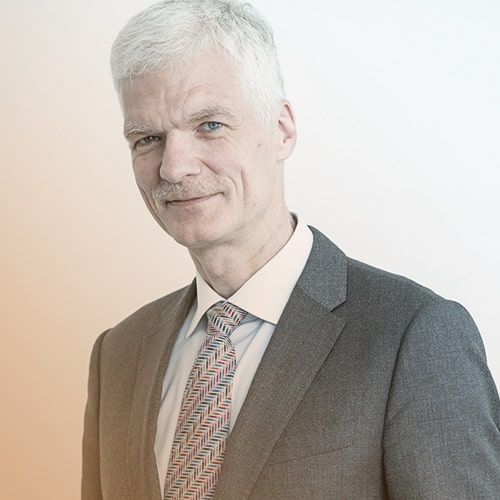

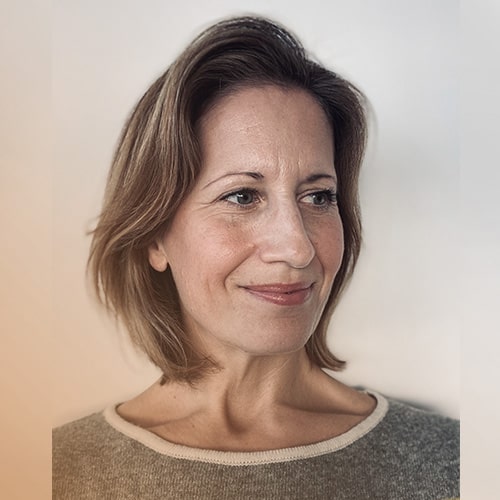


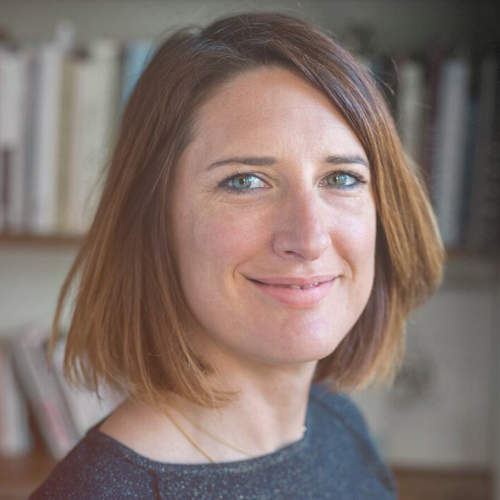
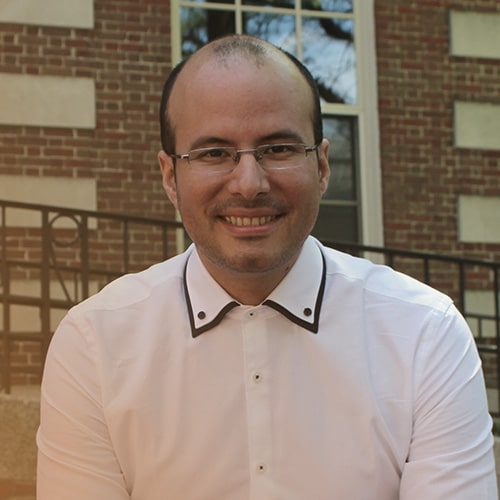
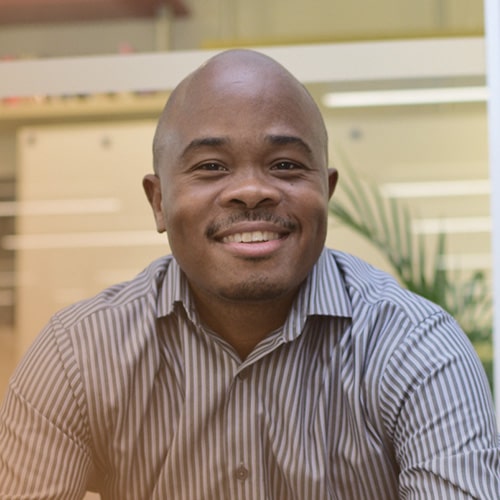
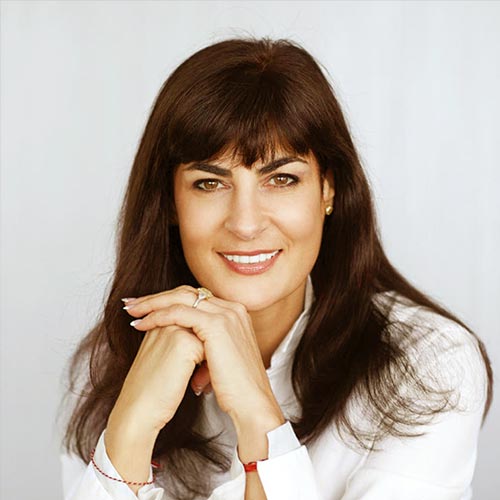




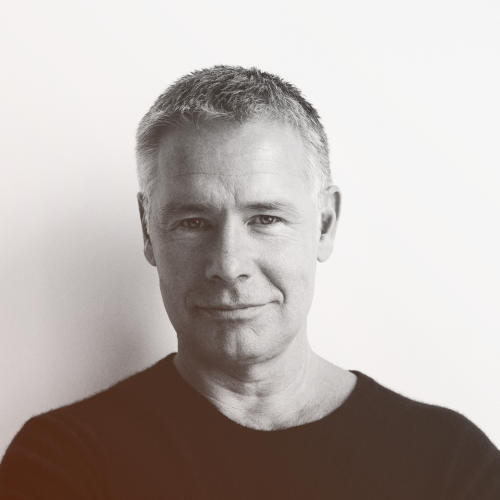
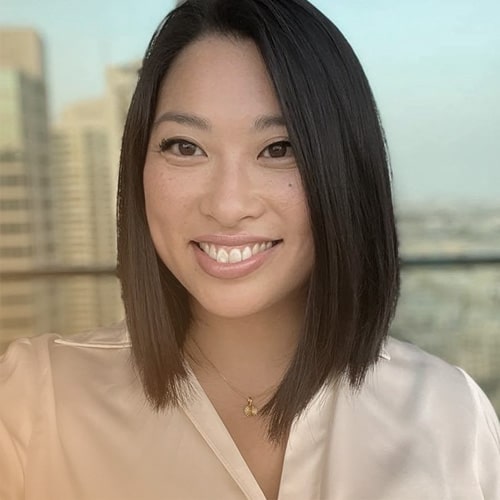
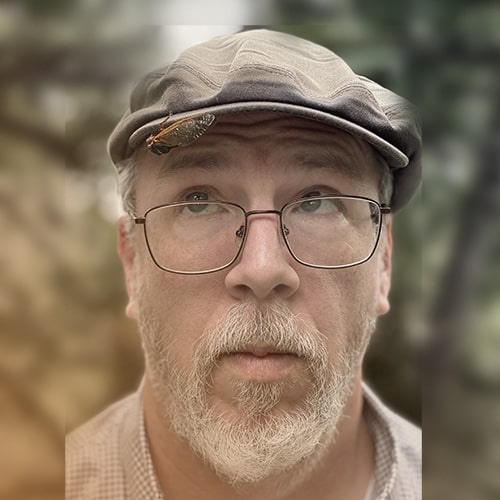
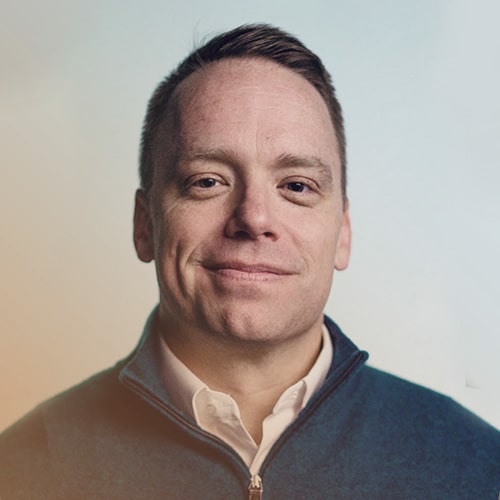
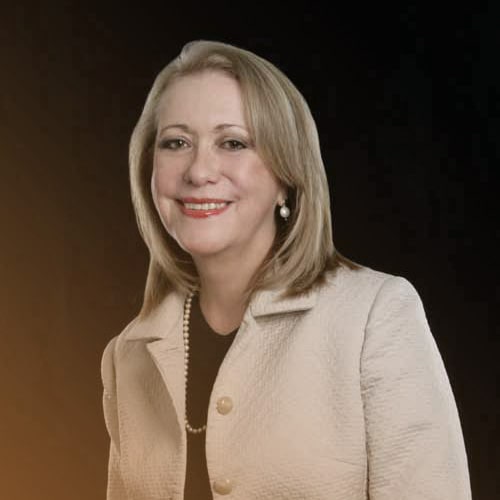
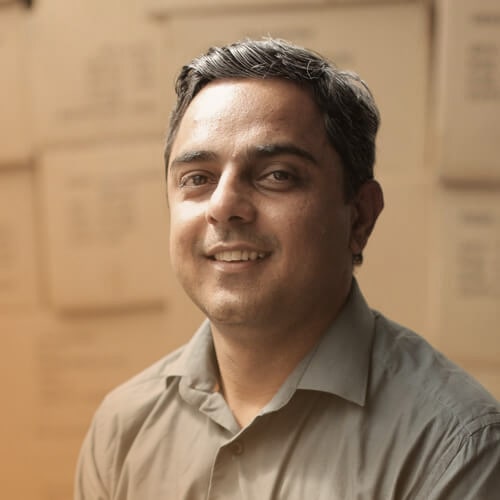
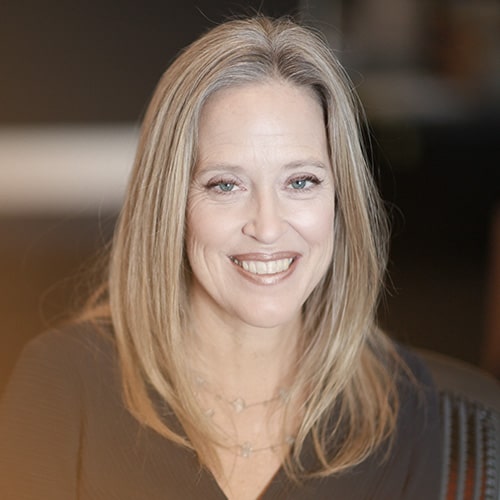
References
Agora - niekée roermond (2019).
African leadership group. (2021). African Leadership Group.
Berger, R. (2021). Our kids are not broken. The Atlantic.
Big Change & Innovation Unit. (2019). Reimagining education together.
Care, E., Talreja, V., Ravindranath, S., & Sahin, A. G. (2020, August 14). Development of student and teacher measures of Happiness Curriculum factors. Brookings.
Casassus, J., & Cusato, S. (2002). First international comparative study: of language, mathematics, and associated factors for students in the third and fourth grade of primary school: second report. Latin American Laboratory for Assessment of Quality.
Colbert V. & Arboleda J. (2016) Bringing a student-centered participatory pedagogy to scale in Colombia. Journal of Educational Change. 17. 1-26. 10.1007/s10833-016-9283-7.
Dorn, E., Hancock, B., & Sarakatsannis, J. (2021, July 27).COVID-19 and education: The lingering effects of unfinished learning. McKinsey & Company.
Dream a Dream. (2021a). Impact report 2020-2021.
Dream a Dream. (2021b). Thriving as the purpose of education.
Education Reimagined. (2020). Catalyzing nationwide, systemic transformation in education.
Enseña Perú. (2020). Enseña Perú.
High Resolves. (2019a). Putting learning science at everyone's fingertips.
HundrED. (2017). Blueprints for success.
HundrED. (2020). Spotlight: Quality education for all during Covid-19 crisis.
HundrED. (2021). Formative Assessment: Improving Learning for Every Child.
Ians. (2019, May 8). Netherlands school that has no classes or curriculum. Business Standard.
Istance D., Paniagua A. (2019) Learning to Leapfrog: Innovate Pedagogics to Transform education. Center for Universal Education at Brookings.
Kids Education Revolution. (2018, May 23). KER week 2018: The highlights. YouTube.
Kids education revolution. (2020). KER.
Kirp, D. L. (2015, 28. Februar). Make school a democracy. The New York Times.
Lister, J. (2016, Oktober). It's time to assess assessment. HundrED.
Luschei T.F., Soto-Peña M. (2019) Beyond Achievement: Colombia’s Escuela Nueva and the Creation of Active Citizens. In: Aman R., Ireland T. (eds) Educational Alternatives in Latin America. Palgrave Macmillan, Cham.
National Research Council. (1999) How people learn. Washington, DC: National Academies Press.
Newton, D. (2021, May 25). WISE awards finalists announced. Forbes.
McGivney, E., & Winthrop, R. (2020). Skills for a changing world. Center for Universal Education at Brookings.
Meadows, D. (n.d..). Leverage points: Places to intervene in a system.
Meadows, D. H. (2008). Thinking in systems: A primer. Chelsea green publishing.
McKinsey & Company, Bughin, J., Hazan, E., Lund, S., Dahlström, P., Wiesinger, A., & Subramaniam, A. (2018, May 23). Skill shift: Skill shift: Automation and the future of the workforce.
MUSE Global. (2020). About us.
OECD. (2010). The nature of learning - using research to inspire practice.
OECD. (2019). Conceptual learning framework - LEARNING COMPASS 2030.
OECD. (2019). Student agency - OECD future of education and skills 2030.
OECD. (2020). Building the future of education.
OECD. (n.d.). Innovation in PISA. Home page - OECD.
OECD & Schleicher, A. (2020). The impact of covid-19 on education insights from education at a glance 2020.
OECD, Reimers, F., & Schleicher, A. (2020). Schooling disrupted, schooling rethought How the Covid-19 pandemic is changing education.
Peterson, A. (2021). What the dodo got wrong - rethinking assessment. Rethinking Assessment.
Populace. (2021). Systems change - A leader's guide to leverage points.
Prothero, A. (2020, September). How to build relationships with students during COVID-19. edweek.
Psacharopoulos G. & Rojas C. & Velez E. (1992) Achievement evaluation of Colombia's Escuela Nueva: Is multigrade the answer?
Remake learning days. (2021).
Rewired. (2021, May 14). Rewiring nodes in the education system. rewired.
Robinson, S. K. (2010, August). Changing education paradigms [Video]. TED Talks.
Schleicher, A. (2020, December 14). Acting on lessons from COVID to bring about deeper change in education - OECD Education and Skills Today. OECD Education and Skills Today.
Schleicher, A. (2018). World Class: How to Build a 21st-Century School System. Strong Performers and Successful Reformers in Education. OECD Publishing. Paris.
Stevenson, M. (2021), Education for Human Flourishing: Orientation and competencies, OECD, Paris.
Taviani, D. (2017, January 27). A new kind of school in Roermond: Agora. Medium.
Teach for All. (2019). Community impact stories: Enseña perú, ancash.
Teach for All. (2020). Global learning lab.
Teach for All. (2020, February 6). Working together to change an ecosystem: Community impact in áncash, peru. Teach For All.
Teach For All. (2021, August). Indonesia's minister of education Nadiem Makarim in conversation with Indonesian student Nazma Zahira.
UNICEF. (2018). An unfair start - inequality in children’s education in rich countries (Innocenti Report Card 15).
UNICEF, Brossard, M., cardoso, M., Kamei, A., Mishra, S., Mizunoya, S., & Reuge, N. (2020). Parental engagement in children’s learning. Innocenti Research Brief 2020-09.
Valerie, S. (2020, 29. August). An unusual model to bring virtual learning ‘to life’. The Washington Post.
Walton, G. (2019). A national experiment reveals where a growth mindset improves achievement - Nature. Nature.
Webb, A. (2019, May 3). Meet the school with no classes, no classrooms and no curriculum. Medium.
Winthrop, R. (2018). Leapfrogging inequality: Remaking education to help young people thrive. Brookings Institution Press.
Winthrop, R., Barton, A., Ershadi, M., & Ziegler, L. (2021).Collaborating to transform and improve education systems. Brookings.
Wise Qatar. (2019, April 24). The Delhi government's happiness curriculum - WISE.
World Bank. (2016, October 3). Nearly 385 million children living in extreme poverty, says joint World Bank Group – UNICEF study.
World Bank. (2021, January 22). Urgent, effective action required to quell the impact of COVID-19 on education worldwide.
Yeager, D.S., Hanselman, P., Walton, G.M. et al., (2019) A national experiment reveals where a growth mindset improves achievement
Footnotes
- OECD, Reimers, F., & Schleicher, A., 2020
- McGivney, E., & Winthrop, R., 2020
- At the time of writing (October 2021), while most education systems were reopening schools, in some parts of the world schools remained closed meaning that children were missing out on learning. Note to Big Chance from Alex Beard, Teach For All 2021
- World Bank, 2021
- Vishal Talreja, Dream a Dream, note to Big Change, 2021
- For example In the USA, K–12 student students were on average five months behind in mathematics and four months behind in reading by the end of the school year 2020-21. High School dropouts increased and progression to post secondary education decreased over previous years. McKinsey, 2021
- UNICEF, 2021
- Hundred, 2020
- Interview with Saku Tuominen, HundrED, 2021
- McGivney, E., & Winthrop, R., 2020
- McKinsey, 2021
- World Bank, 2021
- UNICEF, 2021
- OECD, Reimers, F., & Schleicher, A. (2020).
- OECD, 2020
- Big Change, 2019
- OECD, 2020
- Education Reimagined 2020
- Big Change, 2019
- Interview with Michael Stevenson, OECD, 2021
- OECD, 2021 forthcoming
- Forthcoming
- OECD, 2019
- G20 Interfaith Forum by G20 leaders, 2021
- Education Reimagined, 2020
- Big Change 2019, 2021
- HundrED, 2020
- OECD, 2020
- Big Change interview with Richard Culatta, International Society for Technology in Education, (2021)
- Edweek, 2020
- In Brief, Center of Developing Child, n.d.
- McGivney, E., & Winthrop, R., 2020
- IPPR, 2020
- RewirEd
- Meadows, 2008
- Populace, 2020
- McGivney, E., & Winthrop, R., 2016
- Education Reimagined, 2020
- McGivney, E., & Winthrop, R., 2016; Center for Universal Education, The Brookings Institution 2016
- Meadows, 2008
- Big Change interview with Alex Beard, Teach For All, 2021
- OECD, 2020
- Big Change Interview with Fred Swaniker, African Leadership Group, 2021
- Winthrop et al., 2021
- Big Change interview with Todd Rose, Populace, 2021
- Populace, 2019
- Ibid, 2019
- In particular developments in neuroscience have revealed the effects of environment, sleep, exercise and nutrition on the brain enabling it to adapt structurally and in terms of capacity and capability. Put simply, given the right conditions, everyone can become smarter.
- Ken Robinson, 2010
- Andreas Schleicher, 2018
- Big Change Interview with Stephen Farr, Teach For All Global Learning Lab, 2021
- Andreas Schleicher, 2018
- Education Reimagined, 2020
- Populace, 2019
- Big Change interview with Todd Rose, Populace, 2021
- Winthrop et al., 2021
- Ibid.
- Big Change focus group with Restless Development Youth Researchers
- Enseña Perú, 2020
- Teach For All, 2020
- Enseña Perú, 2020
- Teach For All, 2020
- Lavado and Guzmán, 2021
- Evan & Yuan, 2020
- Worldbank, 2916
- Dream a Dream, 2021a
- Dream a Dream 2021b
- Interview with Vishal Talreja, 2021
- Wise Qatar, 2019
- Care et al., 2020
- Ibid.
- Big Change interview with Alex Beard, 2021
- Note that agency can mean very different things in different cultural contexts. In some countries there is no equivalent translation for learner agency in the way it is defined here.
- OECD, 2019
- HundrED, 2020
- OECD, 2010
- Teach for All, 2021
- OECD, 2019
- Note from Andreas Schleicher, OECD, to Big Change, 2021
- Big Change interview with Saku Tuominen, HundrEd, 2021
- Note from Alex Beard, Teach For All, to Big Change, 2021
- McKinsey, 2018 and McGivney, E., & Winthrop, R., 2020
- Jaime Saavedra in an interview by Teach for All, Global Learning Lab 2021
- Big Change interview with Todd Rose, Populace, 2020
- OECD, 2020
- Ibid.
- HundrED, 2020
- Note from Alex Beard, Teach For All, to Big Change, 2021
- Ibid.
- Chapman, K Indus Case Study Global Learning Lab 2021
- Ibid.
- UNICEF 2020b
- Winthrop et al., 2021
- Big Change focus group with Restless Development Youth Researchers
- Winthrop et al., 2021
- Remake Learning, 2021
- Ibid.
- Winthrop et al., 2021
- Populace, 2019
- Winthrop, R., Barton, A., Ershadi, M., & Ziegler, L., 2021
- Big Change interview with Richard Culatta, International Society for Technology in Education, (2021)
- Big Change focus group with Restless Development Youth Researchers, 2021
- Luschei T.F., Soto-Peña M, 2019
- Colbert & Arboleda, 2016
- Psacharopoulos et al., 1992
- Kirp, 2015
- Casassus & Cusato, 2002
- Kids Education Revolution, 2020
- Ibid.
- Kids Education Revolution, 2020
- Ibid.
- Education Reimagined, 2020
- Teach For All, 2021
- Peterson, 2020
- HundrED, 2021
- Big Change interview with Richard Culatta, International Society for Technology in Education, (2021)
- OECD, 2020
- Ibid.
- OECD, 2020
- Science of Learning and Development Alliance, 2020
- National Research Council, 1999
- Yeager, D.S., Hanselman, P., Walton, G.M. et al., 2019
- Science of Learning and Development Alliance, 2020
- Treisman, 2019 as reported in The Atlantic, 2021
- OECD, 2020
- OECD, 2020
- Chick, 2010
- Ibid.
- Agora, 2019
- Taviani, 2017
- Ians, 2019
- Agora, 2019
- Ians, 2019
- Ibid.
- MUSE Global, 2020
- HundrED, 2017
- Ibid.
- Ibid.
- MUSE Global, 2020